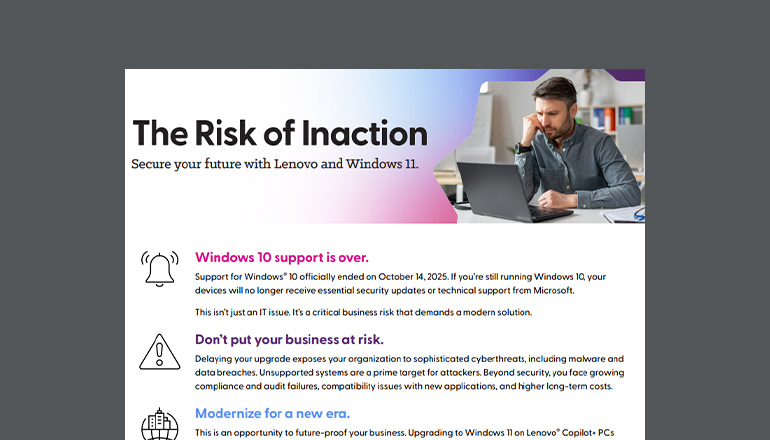Blog How to Increase the ROI of Microsoft Teams
By Anna Donnelly / 10 May 2021 / Topics: Collaboration Modern workplace

In 2020, Microsoft Teams became one of the most popular apps, adding 95 million users and ending the year with a total of 115 million users in Q4. Now, more than 500,000 organizations rely on Teams as their default messaging platform. But those who are using it solely for messaging are missing out on the true value of Teams.
The recent jump in active usage of Microsoft Teams to over 100 million users was largely driven by the shift to remote work; however, if your organization has only focused on using Microsoft Teams as a tool for meetings, chat and document storage, you’re missing out on significant returns on your investment.
Forrester’s study on the projected Total Economic Impact of using the Microsoft Teams platform suggests productivity and cost-savings of millions of dollars, but only when 75% of users have adopted Teams as “a hub for daily work with many productivity-enhancing tools and apps.” This means users adopt Microsoft Teams not only for collaboration, but also to increase productivity, streamline processes, enhance employee engagement and more. That said, many organizations don’t know where to begin with Teams adoption beyond its obvious use as a chat and meetings platform. Its complexities make it hard to even imagine how to go about getting end users to adopt the full platform.
Consider this:
1. There are more than 20 Microsoft Office 365 applications that tie into Microsoft Teams:
- Microsoft Teams is built on the SharePoint framework and utilizes OneDrive for Business storage for certain sharing scenarios.
- Recordings of meetings can be stored in OneDrive and SharePoint, or uploaded to Stream.
- Every Microsoft Office client application is capable of co-authoring/editing, providing version control and auto-saving to Teams.
- Power Platform applications integrate with Microsoft Teams and encourage end users to become “citizen developers” in order to streamline processes and improve productivity.
- Lists, Planner and To Do integrate with Teams to help employees stay on track and be more productive.
2. Thousands of apps (400+ in the Teams store and 3500+ partner apps for Microsoft 365) can be connected to Teams, including some that your organization relies on for its operations, such as Salesforce, Workday, ADP, Azure DevOps, Kronos, Adobe Sign and more.
3. In the last year there were more than 230 updates to Microsoft Teams, and as of April 2021 there are more than 260 updates planned for the year.
4. Viva, Microsoft’s brand new employee experience platform within Teams, which was announced in early 2021, is yet another technology for which you’ll need to eventually address end user adoption.
Learning to leverage the app that can do it all
How do you begin talking about Microsoft Teams to your business and your end users when the platform seemingly does everything? It’s easy to lose sight of the benefits that a well-planned implementation can provide when the platform itself seems overwhelming. Thinking about Teams in terms of its ability to modernize how you do business is a good place to start. Take a look at the example below from the Forrester study mentioned earlier:
“…a healthcare company used Teams as a space for doctors and nurses to collaborate in real time on treatment at a patient level. The organization built a chatbot within Teams that pulls patient information and test results into a Teams group, making it immediately available to clinicians. The bot also sends alerts to doctors when their patients’ test results are ready, avoiding delays in care as clinicians can react to results as soon as they become available. The company relied on Microsoft Power Platform technologies to build an app used from Teams for tracking patient care plans created during patient rounds and ensure that relevant information is available to every member of the care team, replacing a paper-based process. The approach enables physicians and nurses to save between 30 and 90 minutes per day by streamlining processes and eliminating inefficiencies. The chief technology officer explained to Forrester, ‘We see increased productivity because when you have access to information where and when you want it, you are not wasting your time trying to hunt that information.’”
Realizing these kinds of benefits begins with implementing the right foundation for Teams adoption in your organization. A good foundation should encourage your end users to become continuous learners and make IT adoption a way of life at your organization. That foundation is built with:
- A well-defined vision
- Engaged leaders
- A robust community of early adopters and subject-matter-experts
- Users who are empowered to learn and use the platform effectively
- A partnership between the business and IT for defining Teams governance
- A commitment to ongoing improvement
At Insight, we help organizations understand the impact of Microsoft Teams and plan for how it will change the way employees work today and in the future. While we’re committed to helping clients improve their Return on Investment (ROI) with Teams, we also pride ourselves on being a partner who can help clients achieve their digital transformation goals. Our approach goes beyond traditional organizational change management to foster modern ways of working using modern tools for communications and training.



